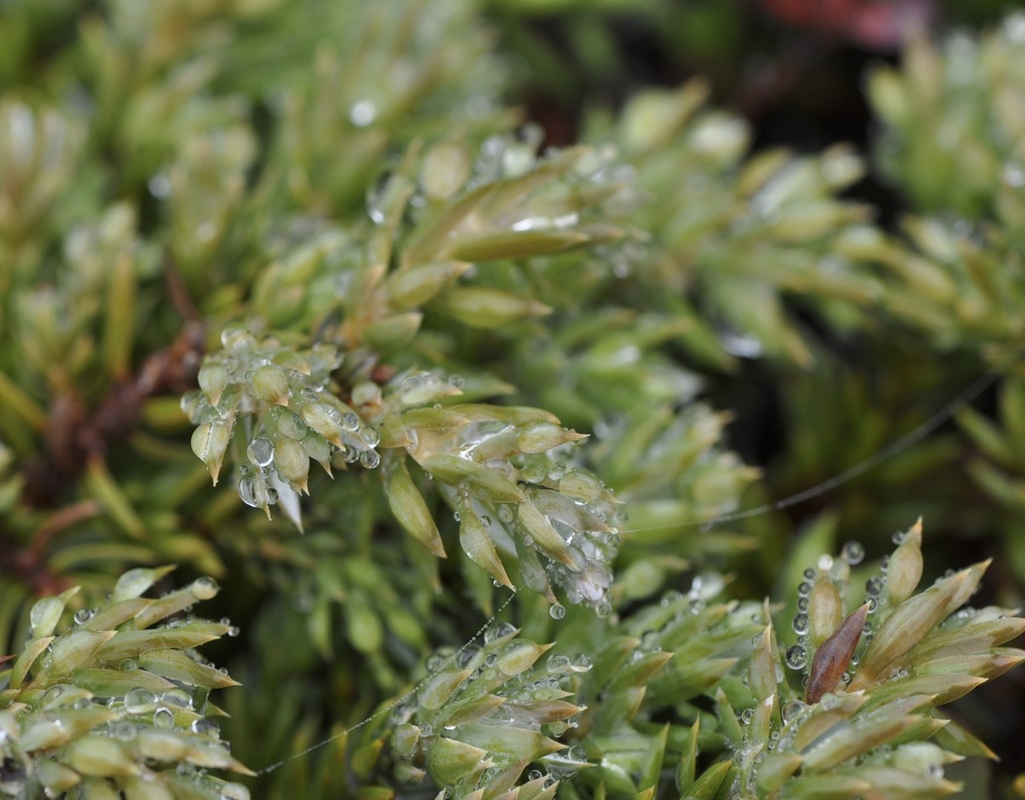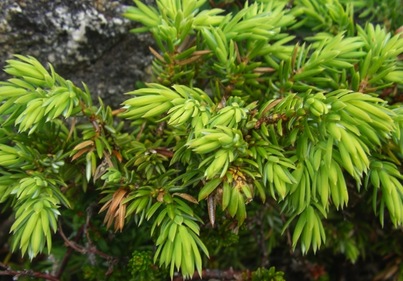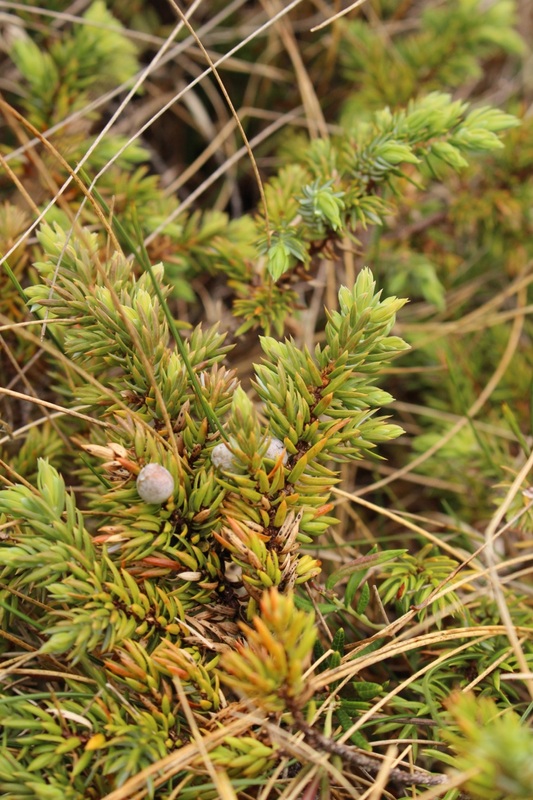Common juniper • Juniperus communis
|
Photos by Kira Hoffman (top left), Peter Gibbs (bottom left), and Nancy Shackelford.
|
Identification
Common juniper is an evergreen, prostrate shrub that trails, making mats up to 1m high and 3m in diameter. It has reddish-brown, scaly bark and needle-like, prickly leaves in whorls of 3. Its fruits are berry-like and a dark bluish black when ripe.
Habitat & Range
Common juniper is found from lowland to alpine zones in dry and open forests, slopes, muskeg, and outcrops. It is distributed across North America, but is most prominent along the Pacific Coast. It is also found in subarctic and temperate zones throughout Eurasia.
Intriguing Info
This shrub had great medicinal use for interior First Nations, as it was used to ease childbirth and to treat urinary infections. With that said, caution must be used since it is also known to cause contractions, and therefore miscarriages in pregnant women. Juniper berries have many uses in European cooking, including in the production of gin - they give gin its distinctive pine-like flavouring. See this UBC Botany Photo of the Day entry for more gin-related information about this useful shrub.
Common juniper is an evergreen, prostrate shrub that trails, making mats up to 1m high and 3m in diameter. It has reddish-brown, scaly bark and needle-like, prickly leaves in whorls of 3. Its fruits are berry-like and a dark bluish black when ripe.
Habitat & Range
Common juniper is found from lowland to alpine zones in dry and open forests, slopes, muskeg, and outcrops. It is distributed across North America, but is most prominent along the Pacific Coast. It is also found in subarctic and temperate zones throughout Eurasia.
Intriguing Info
This shrub had great medicinal use for interior First Nations, as it was used to ease childbirth and to treat urinary infections. With that said, caution must be used since it is also known to cause contractions, and therefore miscarriages in pregnant women. Juniper berries have many uses in European cooking, including in the production of gin - they give gin its distinctive pine-like flavouring. See this UBC Botany Photo of the Day entry for more gin-related information about this useful shrub.
References
Juniperus communis L. In Klinkenberg, Brian. (Ed.). E-Flora BC: Electronic Atlas of the Plants of British Columbia. Lab for Advanced Spatial Analysis, Department of Geography, University of British Columbia, Vancouver. Accessed 24/06/2014.
Pojar, J. and MacKinnon, A. (1994). Plants of Coastal British Columbia. Vancouver, BC: Lone Pine Publishing. P. 94.
Authors and editors of page
Kalina Hunter, Kelly Fretwell, and Brian Starzomski (2014).
Juniperus communis L. In Klinkenberg, Brian. (Ed.). E-Flora BC: Electronic Atlas of the Plants of British Columbia. Lab for Advanced Spatial Analysis, Department of Geography, University of British Columbia, Vancouver. Accessed 24/06/2014.
Pojar, J. and MacKinnon, A. (1994). Plants of Coastal British Columbia. Vancouver, BC: Lone Pine Publishing. P. 94.
Authors and editors of page
Kalina Hunter, Kelly Fretwell, and Brian Starzomski (2014).






